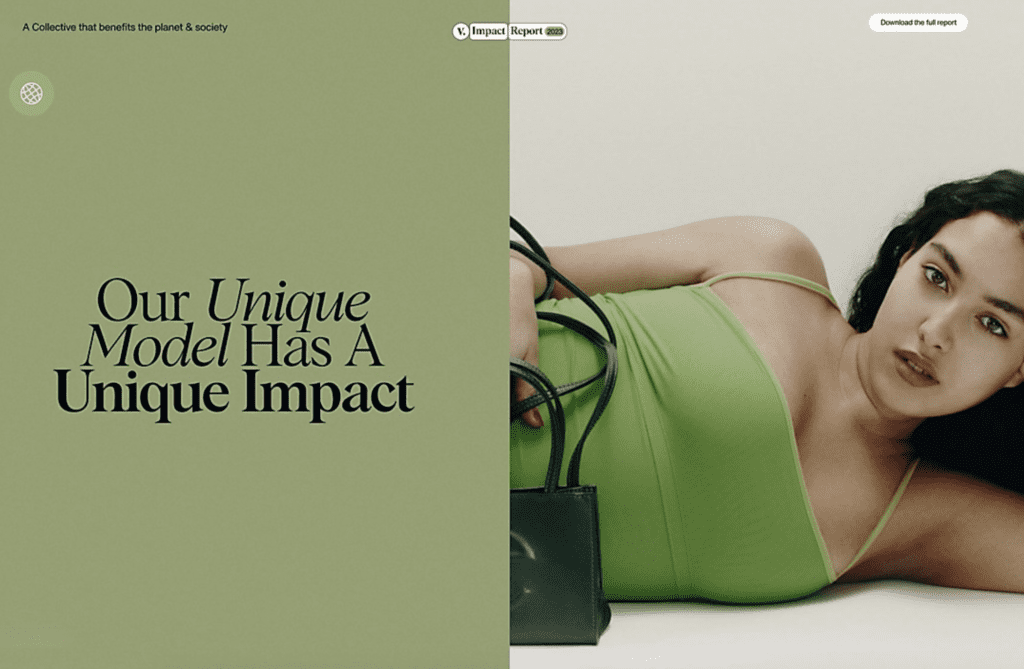A major fashion industry entity is going carbon neutral. Kering revealed on Tuesday that its “entire group” of brands “will become carbon neutral within its own operations and across the entire supply chain.” The Paris-based conglomerate, which owns the parent company of Gucci, Yves Saint Laurent, Bottega Veneta, and Alexander McQueen, among others, says that it will “offset the group’s annual greenhouse gas emissions from 2018 on top of all efforts to first avoid and then reduce them.” Going forward, Kering says it “set a Science-Based Target to reduce all its greenhouse gas emissions related to its own operations and supply chain by 50 percent by 2025.”
While Gucci, Burberry, and sustainable luxury brand Gabriela Hearst have all recently revealed carbon neutrality endeavors, Kering is the biggest name to enter into the arena with an aim to do its part to manage the emissions of carbon dioxide – the main greenhouse gas driving climate change – that comes hand-in-hand with garment manufacturing and over-the-top seasonal runway show productions. The fashion industry is, after all, responsible for “around 10 percent of all global greenhouse gas emissions due to its long supply chains and energy intensive production,” according to the United Nations Framework Convention on Climate Change.
As such, there is work to be done, particularly by the industry’s biggest brands, but the reality of the push to be more transparent and more accountable when it comes to carbon emissions is something that Gucci CEO Marco Bizzarri put well when he said, “The only way we can have zero emissions is to shut our business.” With that in mind, the goal being put forth by brands is carbon neutrality, which is different from total carbon elimination.
Unlike, “sustainability,” for instance, which lacks a concrete and uniformly-used definition, there is a widely-accepted definition for carbon neutrality: it refers to achieving net zero carbon emissions by minimizing emissions and offsetting gross carbon emissions from operations with an equivalent amount of renewable energy and/or carbon offset. In terms of the latter, “the idea behind [carbon offsets] is simple,” Akshat Rathi wrote for Quartz, “if you can’t avoid burning fossil fuels, you pay someone else to prevent an equivalent amount of greenhouse gases from getting into the atmosphere.”
Offsets come in the form of larger emission reduction projects that occur beyond the workings of the companies that are paying to purchase them. “Projects like building a wind farm, supporting truck stop electrification projects, planting trees or preserving forests are very common carbon offset projects,” according to the Carbonfund Foundation. Credits to help fund these projects are proving a popular initiative for fashion brands that want to be more ecologically sound and achieve carbon neutrality, while still manufacturing garments and accessories, and staging runway shows.
Gucci, for instance, revealed that for each unit of carbon that it cannot eliminate from its operations and those of its suppliers, it will purchase carbon offset credits from REDD+, an international initiative developed to supporting forest conservation projects in developing countries. When a company purchases carbon offset credits from REDD+, each of which “represents the reduction of greenhouse gases equal to one metric ton (or 2,205 pounds) of carbon dioxide equivalent (CO2e),” the organization puts these funds “towards actions that enable developing countries to conserve or sustainably use their forests.”
Meanwhile, Kering’s offsetting “will continue to be accomplished through verified best-in-class REDD+ projects that conserve critical forests and biodiversity, and support the livelihoods of local communities.”
So, the difficulty for the fashion industry when it comes to carbon neutrality is not in defining what it means. Instead, the issue is figuring out how to achieve it with any kind of precision. This is no small feat since, as Vogue’s Emily Farra noted this month, it is difficult to determine the carbon footprint of a fashion show. And looking beyond fashion week, it is very difficult to track how much carbon dioxide a fashion brand discharges in terms of manufacturing and selling their products. This is because “apparel and footwear supply chains are so vast and complex,” Fast Co.’s Elizabeth Sevran wrote last week. This complexity is compounded by the fact that many companies’ supply chains tend to include significant – and often undocumented – holes when brands’ suppliers rely on subcontractors, which is a common, industry-wide practice.
Segran stated that “while some brands are beginning to track how much they emit in their stores and offices, very few go all the way to their partner factories and raw materials.” This is further complicated by the fact that there is not a one-size-fits-all measure for emissions that applies from brand to brand.
The inability of brands to adequately gauge their individual emissions is a critical element in the equation since carbon neutrality requires companies to determine the scale of their emissions in order to offset them. While “offset providers, such as Less Emissions and CarbonZero say they are very precise, using rigorous methods for monitoring and calculating emissions reductions from their offsetting projects, which are audited and certified by third parties,” according to CBC, researchers are skeptical.
“There’s a lot of guesswork that goes into [offsets],” says Kate Ervine, a professor of international development studies at St. Mary’s University in Halifax, who does research on carbon offsets.
Gucci, for one, does not deny the difficulty at play: “Tracking our impacts earlier in the supply chain is not as easy as measuring our own direct impact,” Bizzarri told Fast Co., noting that the company is “using many mathematical models from different universities” and standards set forth by the Greenhouse Gas Protocol – a partnership between World Resources Institute and the World Business Council for Sustainable Development that “establishes comprehensive global standardized frameworks to measure and manage greenhouse gas emissions” – to calculate its footprint.
Kering says that in furtherance of its larger sustainability road map, it has been “leveraging its pioneering Environmental Profit and Loss (EP&L) accounting to analyze the group’s greenhouse gas emissions up to the base of the supply chain, where raw materials are created,” thereby enabling it to “put in place customized supply chain initiatives and efficiency programs to effectively avoid and reduce its emissions,” and hopes that other brands and groups will follow suit.











